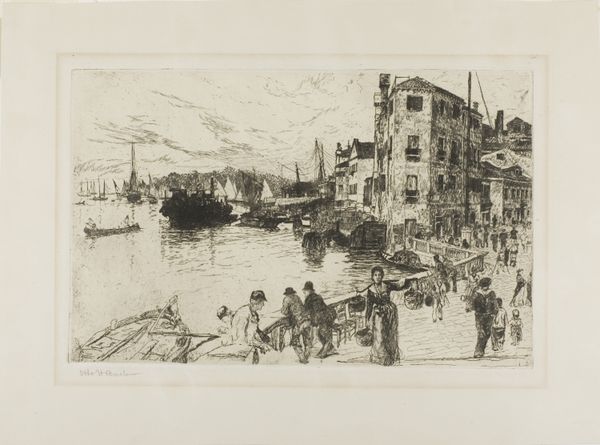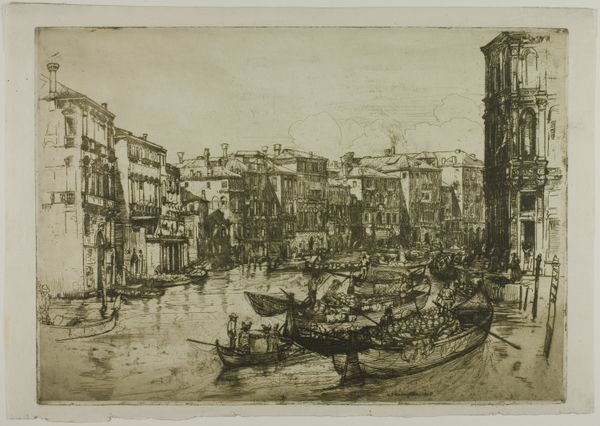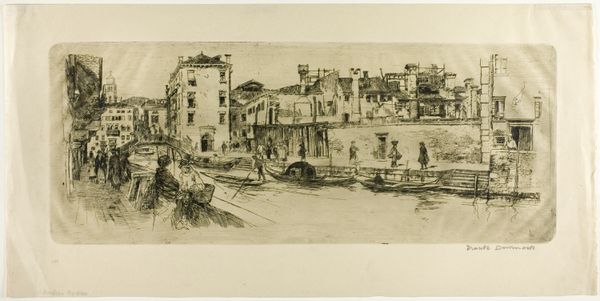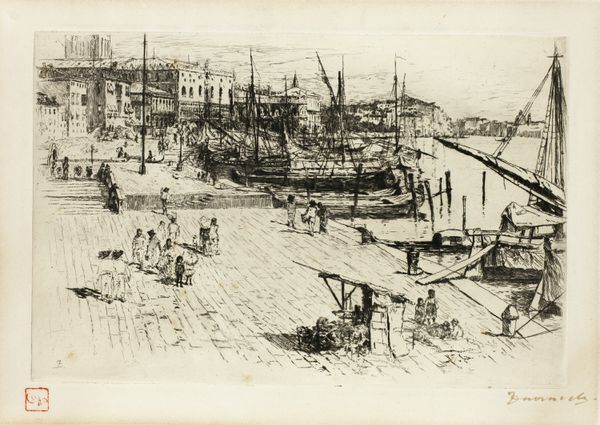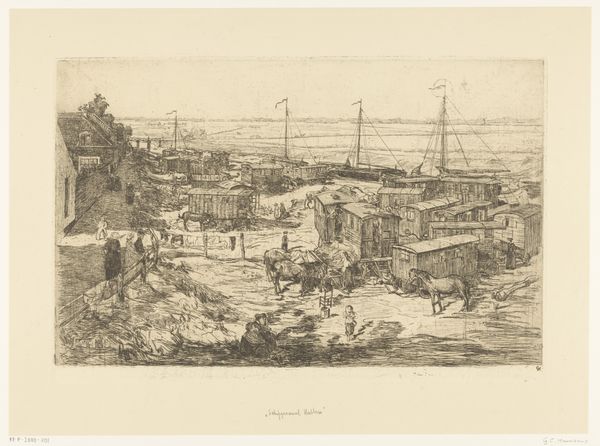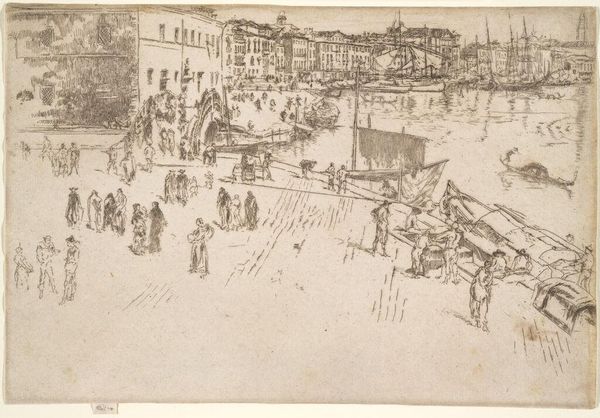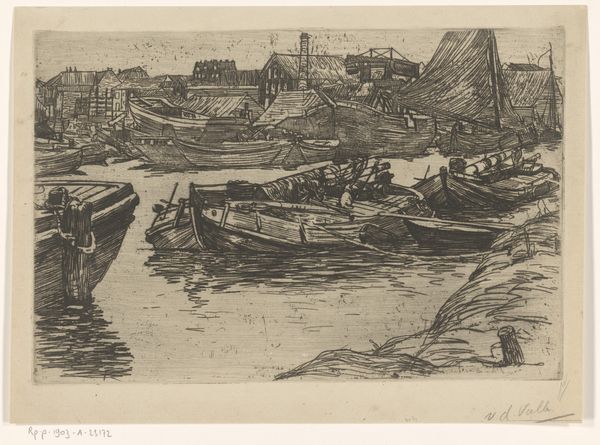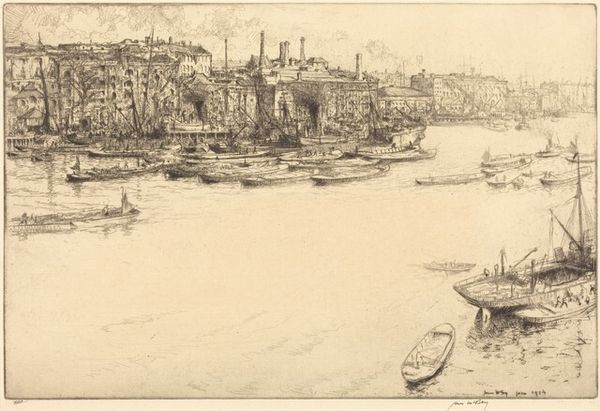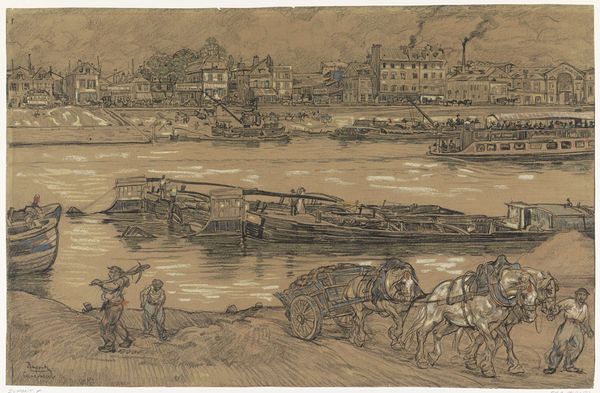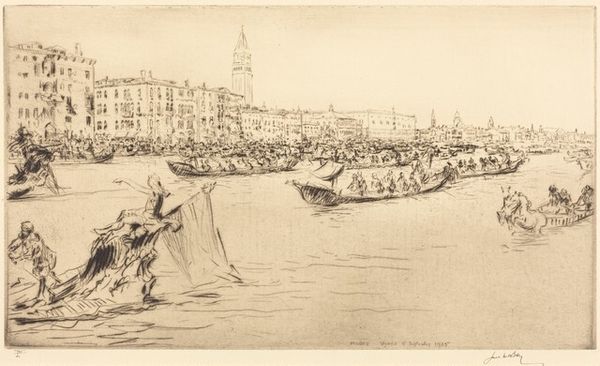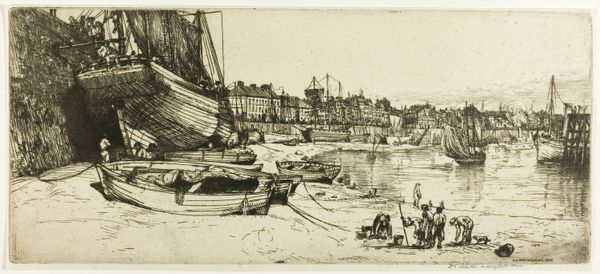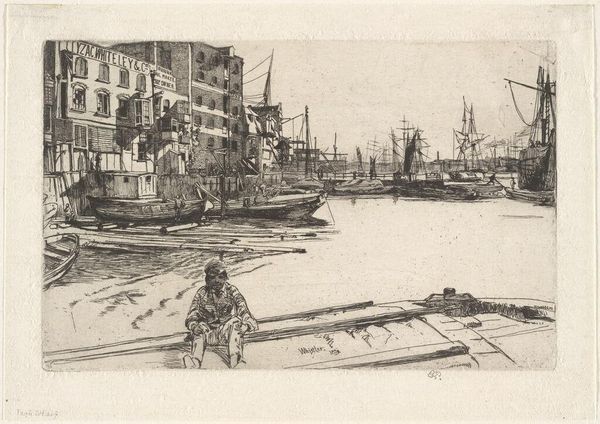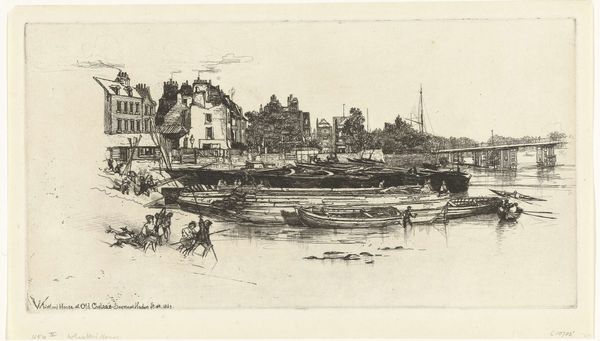
drawing, print, etching, paper
#
drawing
#
16_19th-century
# print
#
impressionism
#
etching
#
landscape
#
etching
#
paper
#
cityscape
#
realism
Dimensions: 267 × 391 mm (image); 277 × 402 mm (plate); 368 × 482 mm (sheet)
Copyright: Public Domain
Curator: Before us is Frank Duveneck’s 1883 etching, "View of the Grand Canal," held at the Art Institute of Chicago. Editor: It’s lively! A little murky, perhaps, but bursting with details; a busy scene frozen in time, teeming with anonymous figures. What’s captivating is how Duveneck conjures so much atmosphere with so little. Curator: That murkiness, as you say, becomes almost symbolic when we consider Venice. Its history, its weight as a cultural center—all emerge from this slightly faded sepia palette. The Grand Canal, then, becomes a kind of mirrored surface reflecting collective memory. Editor: Well, look closer at how the ink bites into the paper. The lines aren’t just descriptive; they create texture, a palpable sense of dampness, of age and wear on the palazzi lining the canal. The social context is implied by those figures, of course, going about their business along the fondamenta. It is interesting how he achieved that, laboriously using metal tools and acid to carve the image on a metal plate. Curator: The buildings themselves could almost be read as hieroglyphs, repeating certain architectural motifs, echoing the passage of time. Note, too, the human figures – how some are rendered in detail, while others remain almost ghostly sketches. Do these represent fleeting encounters, forgotten stories, lost identities subsumed into the grandeur of the city? Editor: Or could it just be the difference in the stage of labor performed for each. From a Materialist point of view it suggests different applications of skill: less acid applied and the drawing on the plate hurried for those ghostly sketched people versus those where more precise, exacting care were enacted. But, as we discussed, is all labor equal? Where were the printing workshops, what sort of lives did etchers live at this time and does Duveneck reveal these things or, perhaps, intentionally obscure them? Curator: That contrast you highlight contributes to the dynamism, that almost cinematic feeling – very modern, really, for its time. It encapsulates the ephemeral quality of life in a city steeped in history. Editor: I concur with you in part there - the image vibrates with social energies caught through its meticulous creation in both composition, but equally the printing. Well, I could continue looking at Duveneck’s marks all day… Curator: As could I; it prompts endless reflection.
Comments
No comments
Be the first to comment and join the conversation on the ultimate creative platform.
